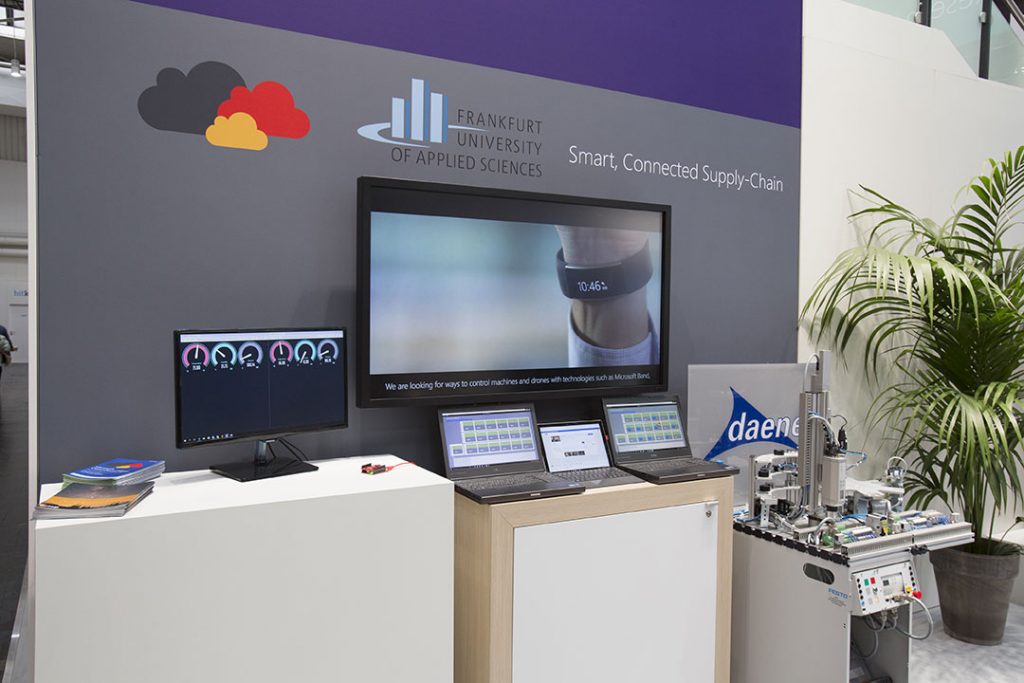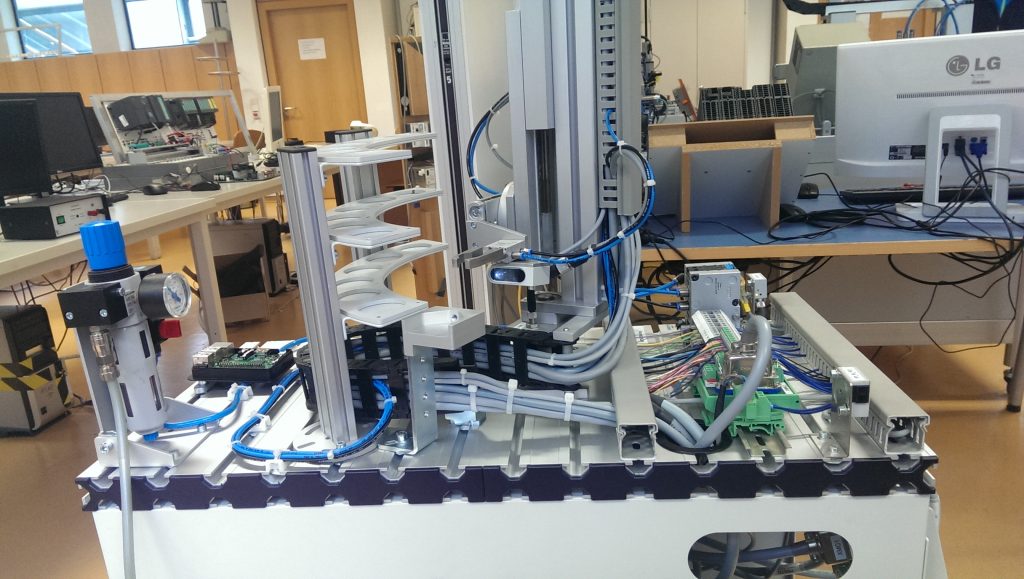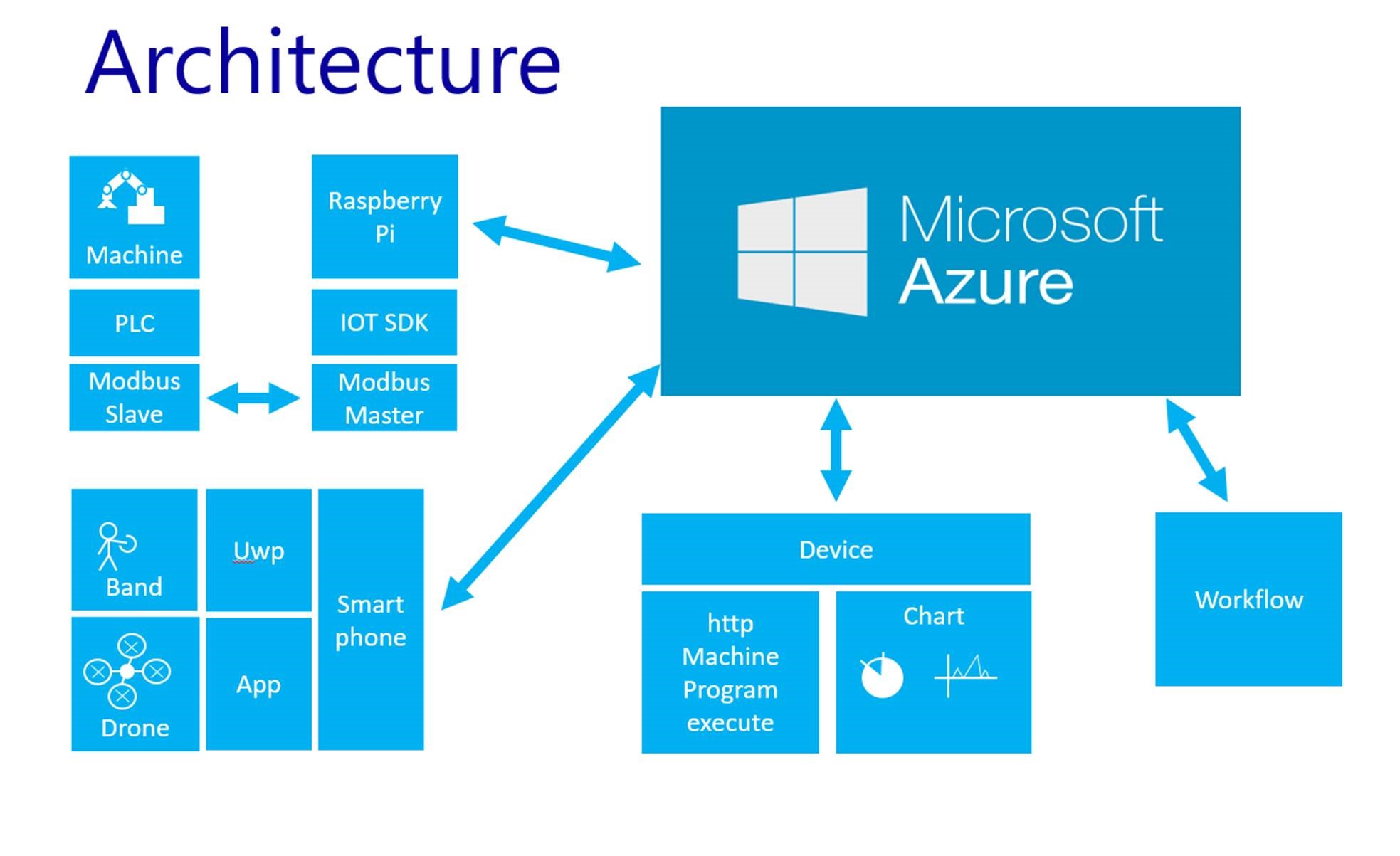Connecting aging machines to ‘new life’ for Germany’s Mittelstand and beyond
Even aging industrial machines can be reborn into the modern world of artificial intelligence, thanks to a new platform developed in Germany using off-the-shelf technology.
The project promises to help small- and mid-sized companies modernize their equipment without big outlays for replacements, and the ability to operate the machines remotely means mom-and-pop manufacturers can expand their operations and create new business opportunities.
The Frankfurt University of Applied Sciences and Daenet, a Microsoft partner, will show their “Smart Automation” this week at the Hannover Messe industrial fair in Germany using two machines connected to each other and a person, via the cloud and a Microsoft Band wearable device. The demonstration is targeting the vast majority of German enterprises with fewer than 500 employees – the famous “Mittelstand” – that power Europe’s economy.
“We’re going to show a new kind of interaction between humans and machines,” says Damir Dobric, managing director and lead architect at software development firm Daenet. “It’s not only about monitoring and controlling, but once you have that, you can do analytics and machine learning and so on.”
The system can be used with numerous scenarios, and Dobric and his team will demonstrate several. The group is using two industrial machines, built by German industrial control and automation company Festo. One will be in Hannover and the other in Frankfurt, with live footage of the latter shown at the fair, about 160 miles north of the university. The video will be shot by a drone, also controlled out of Hannover with the Band device.

The machine in Hannover is a sort of robot that sorts and organizes things, while the one in Frankfurt stamps metal objects. The team will show how they gave both machines new “brains” by installing a Raspberry Pi, a credit card-sized computer that costs less than $40, then added some software and connected them to the cloud through the Microsoft Azure IoT hub gateway.
“So you have an industrial machine, you take this small PC with the software, put it in the machine with some cables, and the machine is connected to the cloud,” Dobric says. “And the program uses protocol that is web-standard, so any designer, Web developer or software engineer can do that.”
The machines can talk to each other as well as to the humans involved, creating as small or vast a web of connectivity as needed on Microsoft’s Azure cloud platform. They can coordinate with each other, such as having the first machine activate the other once it’s finished a preset task, or vice versa, and they can be directed by a person remotely through a device as small and simple as a Microsoft Band – no touchscreen required.
“All these machines that have the gateway can connect to this program, and you can monitor them or take control of the machines, with no restrictions on where the machine is running, whether it’s on-site at your company, on the street, in an airplane, wherever,” Dobric says.
The Band can also provide simple notifications, such as letting business owners know when machines have finished orders or if they’ve failed or broken down.
Some aspects of the system are already being used by companies, while others – such as controlling a drone with a Microsoft Band from anywhere in the world – are more futuristic. The team is also working with Microsoft HoloLens to research holographic solutions that project machines with all their data in virtual reality, in the context of human-machine interaction.
The main advantage to giving machines brains is predictive maintenance, Dobric says, especially if a machine consists of different parts that work at varying rates, meaning some need to be replaced more frequently than others. Connecting them to the cloud allows for tracking and notification of those parts’ conditions.
“Machines out there, they don’t know anything, they’re just working,” Dobric says. “They don’t have the tools to get data and analyze it. When you are able to take the data out of the machine and put it in a place where you can analyze it and show it, then you’re a winner.”
The team’s concept opens up opportunities for Mittelstand businesspeople to offer new services by using the technology, probing information they never had before, he says.
“When you see all these technologies working together without touching them, and you see these complex machines which are very primitive, after 20 or so years on the market, and now they’re working in a totally new, totally connected world, it’s cool,” Dobric says. “You’re giving them new life.”









